Canada is an outdoor paradise, right? Well, anyway, I heard that again and again. And according to many Canadians, British Columbia is one of the most amazing places on Earth. You can even see it written on the road signs and license plates.
Okay, let’s just leave that stand as it is for the time being, because we all know that everyone has their own opinion about things.
I was standing in Prince Rupert at the harbor and didn’t know how I should continue my cycling tour. Should I head towards Alaska or not?
The tourist season was reaching its peak. The so-called RVs (recreational vehicles), with which many North Americans conquer their country, had become an integral part of the highway and that’s why the idea of taking the highway to the north was somewhat alarming and diminished my desire to ride to Alaska significantly.
Although I had already been thinking about it for a month on the island of Haida Gwaii, unfortunately, I still had not made a decision. Alaska had always been a big dream of mine, but at this point I had to seriously consider what I wanted to do.
I sat in a small Chinese restaurant In Prince Rupert – by the way, I should mention that the Chinese food in Canada has about as much to do with real Chinese food as German food compared to Italian cuisine.
Along with the bill I was given a fortune cookie. I usually find such things rather silly, but I opened it anyway and this time, the slip of paper in the cookie surprised me.
“Traveling south will bring you unexpected happiness!” Wow, that went right to the heart of the matter!

Terrace was not especially far away and it is there that I would have to make my first decision, because the first possible crossroad that would take me to Alaska was located in Terrace, the Stewart-Cassiar Highway.
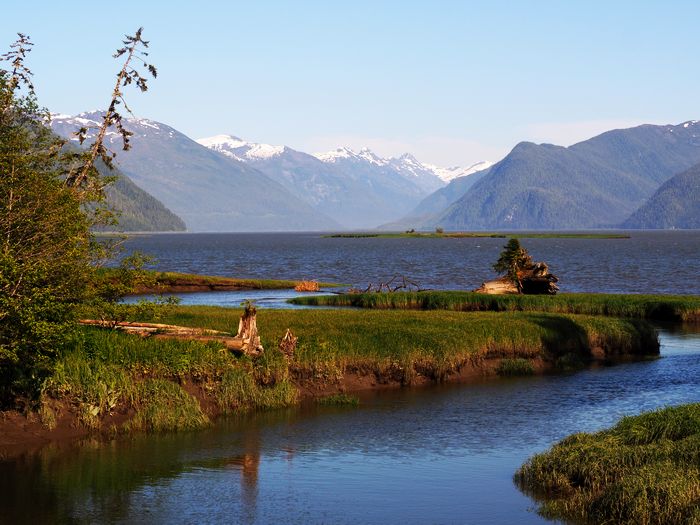
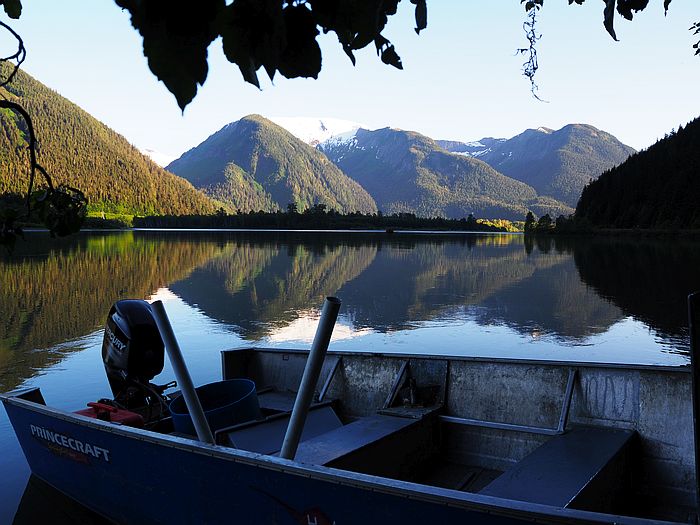
At the halfway point, I camped with two Canadians on a beautiful river. The truly idyllic scenes, however, are only on my pictures, because in the background, the trucks thundered loudly past us on the highway.
We started talking and my only real question was about whether British Columbia had anything to offer other than forests, mountains and water?
“Don’t you like Canada? It’s wonderful here, “they said.
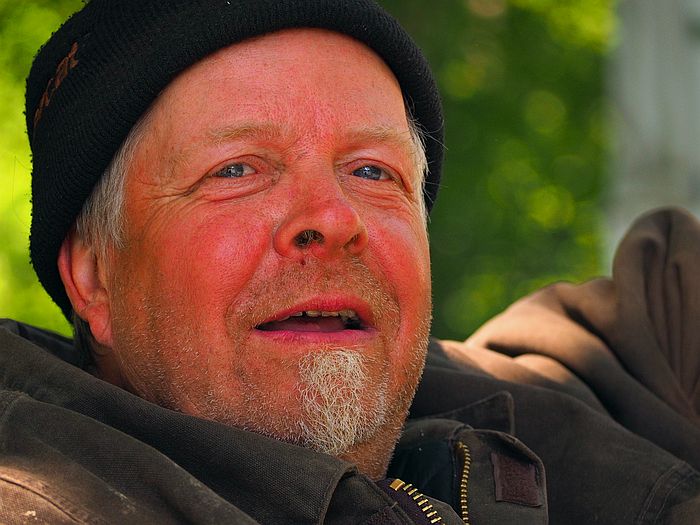
The two slept in their RVs while I slept in the tent. I walked around it to collect any garbage or food scraps left lying on the ground in order to erase any signal to potential bears nearby that there might be something delicious to be found next to my tent.
The next morning, when the salmon fishermen cleaned their fish directly beside my campsite, I knew from then on that it would probably be much safer to camp somewhere alone than near people or existing tent sites; obviously, they didn’t care about what subsequent campers might possibly have for problems.
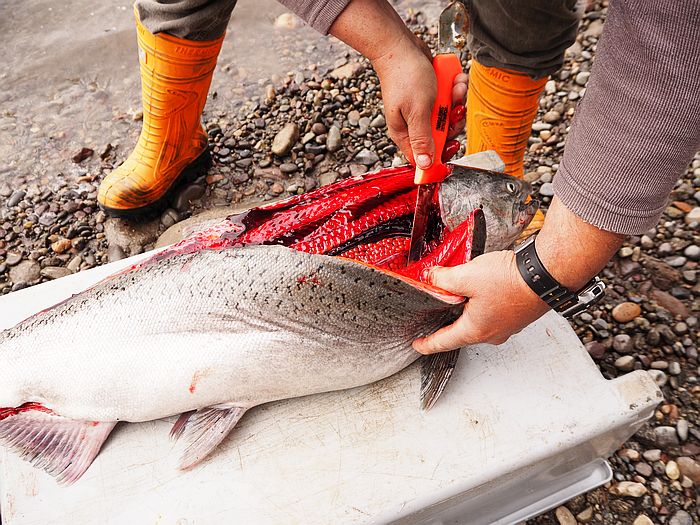
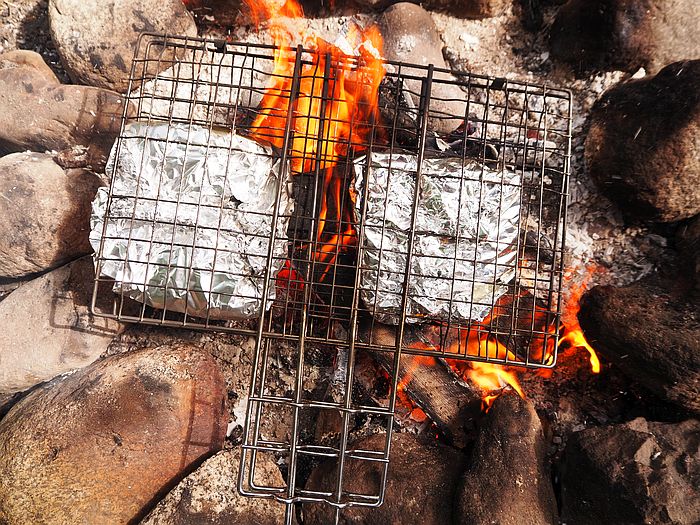
After I began to really have trouble being enthusiastic about the many forests and excessive traffic, I attempted to sweeten my time in the evenings by staying in the homes of warmshower hosts.
In Terrace, I enjoyed a great evening with a very kind host. I found it rather funny when the lady told me that a few days ago another cyclist was here, who had asked if there was anything else to see in British Columbia other than forests, mountains and water? When she told him “no, but isn’t it beautiful here?” he answered “well, yes, but it’s too boring for me.”
He was my very first ally in this country, even though I’d never even met him.
I rode right on past the first crossroad that led to Alaska and continued on the highway toward the east. This was the only road there was, and that is exactly the problem. Canada, or let’s say British Columbia, is a huge province with a tiny little population. So it is understandable that there is only one road here and not an endless number of alternative routes as can be found in other countries. It would just not be affordable.
But as a cyclist, I simply find highways super boring. Nothing ever happens there. You see nothing but trees and more trees and cars, and now and then you cross a river. Every kilometer looks the same. For motivation, in my opinion, that is fatal.
At the last crossroad to the north, in Kitwanga, I camped four days in the same place and sat every day in the warm laundry room counting the number of campers that were driving northward. I couldn’t envision any wilderness or solitude on that route for me at all.
The people say “this is remote, lonely, far away from everything.” Such terms are all relative in the summer.
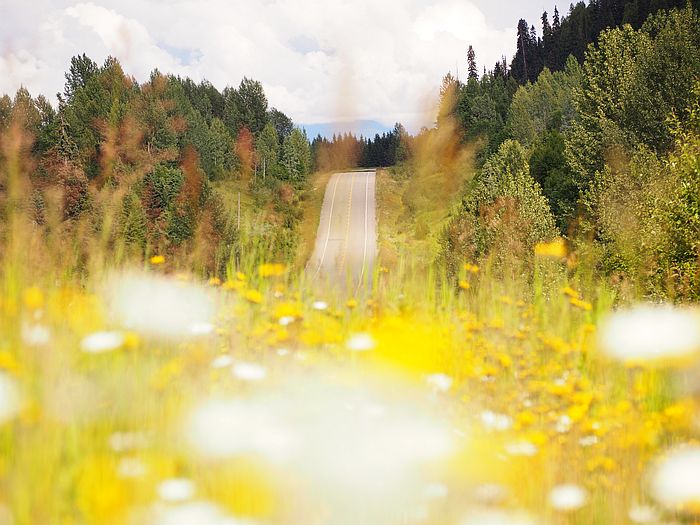
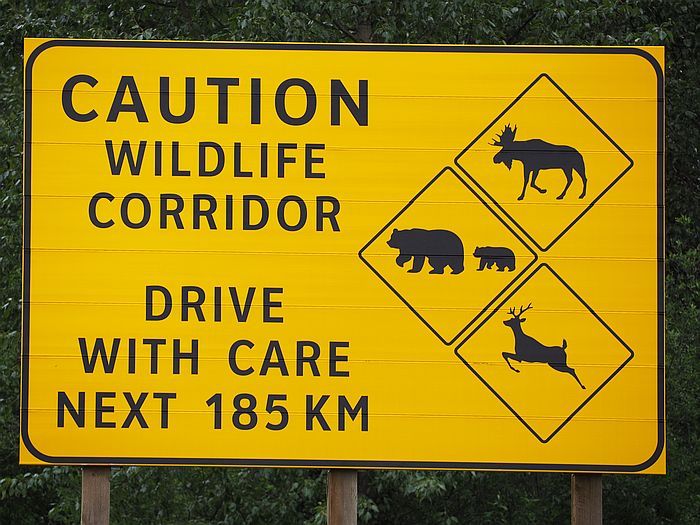
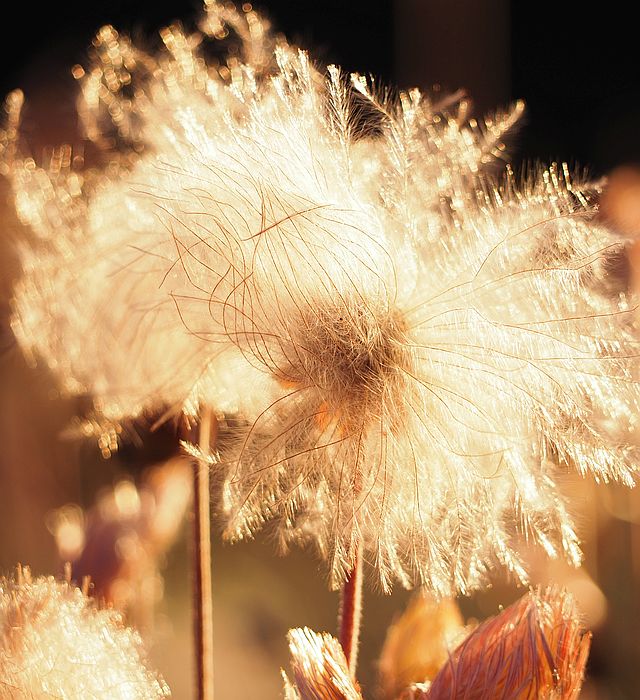
Somehow It would have been reason enough for me not to turn toward Alaska but then on top of it, my camera failed and the distance to the nearest camera shop in the north would have been much further than going to Prince George in the east.
And therefore a new idea was born, which was to travel the Great Divide – the longest MTB route in the entire world – 4500 kilometers (2,800 miles) of cycling trails from Banff in Canada to Mexico, always traversing the watershed known as the Continental Divide. And that was what I was now heading for – another 1150 km on the highway southeast to Banff.
Plainly said, they would be the worst kilometers of my entire journey, because they were endless. I asked myself anew every day “why don’t I just hitchhike and simply strike this highway from the record.
But, at the same time, I kept thinking that we also have to endure the uncomfortable moments in life; when you only take the most delicious pieces of pie all the time, someday you will eventually no longer enjoy any pie at all.
Also, I’m just too stubborn and, somehow, I just had to press on, because I was the one who had gotten myself into this situation in the first place.
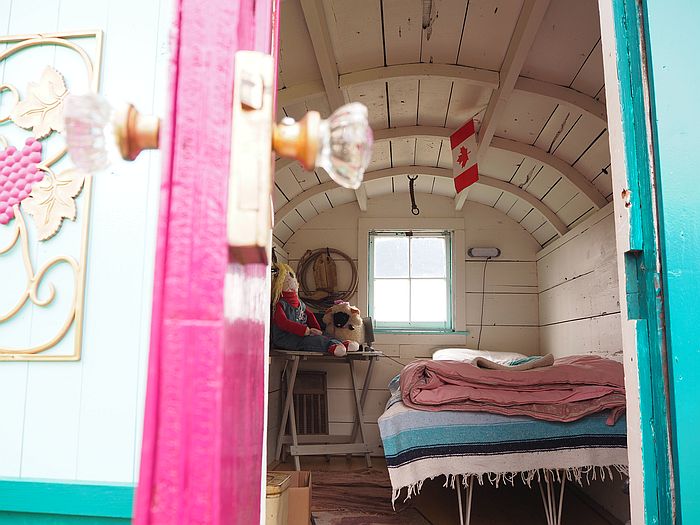
Almost every evening a prearranged warmshower host waited along this route for me and that put me under a little bit of pressure to arrive on time in the evening. Besides that, my reward every evening was a shower, a bed and someone as a conversation partner.
Normally, it is often too complicated for me to go looking for a warmshower host; I would always have to make more rigid decisions, which limits my freedom too much. But, this time it helped me to stay on the ball.
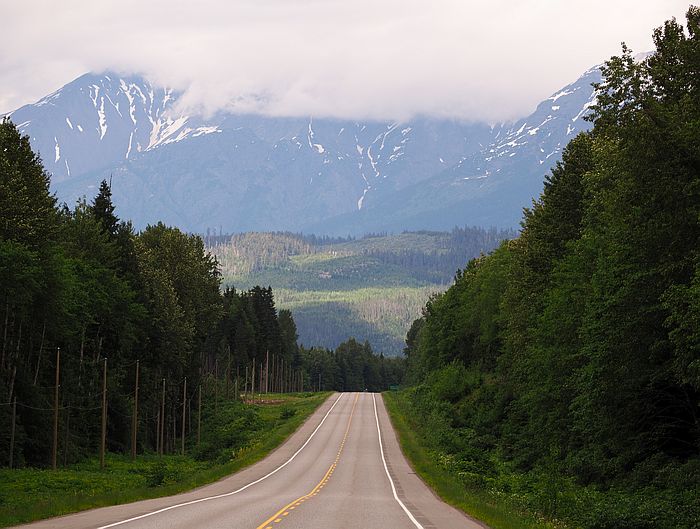
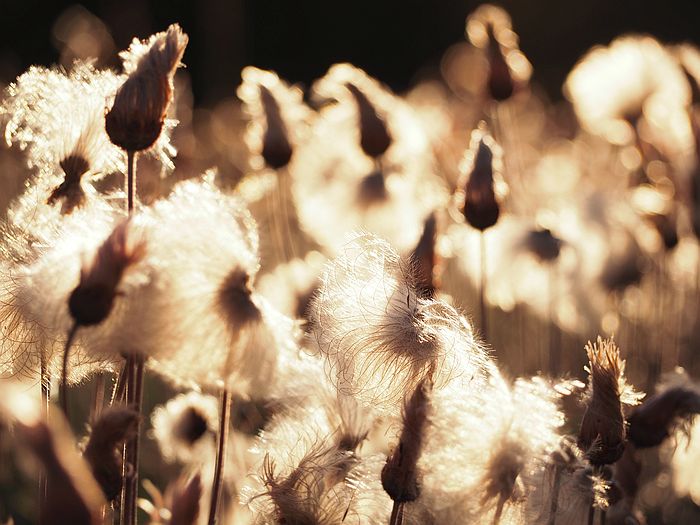
Smithers is supposed to be a very nice place; in any case, that is what I had been told some hundred kilometers back, and the closer I got the more often I heard it. Well, for me, it was nothing more than a place like everywhere else.
Ever since Vancouver, especially on the Sunshine Coast, I was told repeatedly that exactly the place that I had just stopped was the greatest place in Canada. Then, when I would ask them something about where they had actually been so far, most had never really been much of anywhere else. And, if it came to that, in response to my somewhat irritated reply “if this is the most beautiful spot in Canada, and you haven’t seen anything else, then how can you know?” the answer was almost always the same, “well, that’s what they say.”
What I found rather striking in the United States, was that not a single American had ever given me their opinion of Canada when I mentioned that I was on my way there. And yet, after I had crossed the border, I was constantly asked the question “I hope you have noticed that Canadians are very different from Americans?”
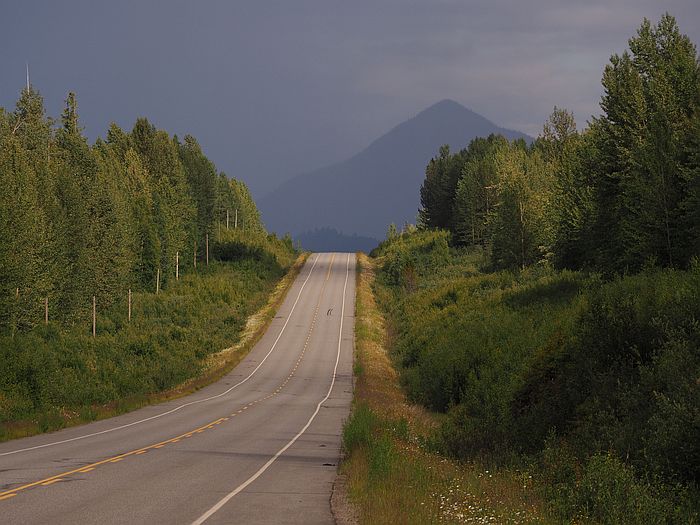
Highway 16 is also called the “Highway of Tears”, because quite a lot of girls, who were hitchhiking here in the last 30 years, had been murdered. There were signs everywhere that warned against hitchhiking; there were crosses on the road; and there were posters with faces of young girls that were being looked for but had not been found.
I met a few cyclists. Most of them were enthusiastic about the route, which at once gave me the impression that I am somehow amiss in my thinking. Or maybe I’ve seen too much? Or am I just simply different because I could not really communicate well with highway cyclists?
I also met my first two solo female cyclists here – both Swiss. One of them had made a round trip through BC, while the other was on the road in New Zealand, Canada and Alaska.
I also met some “First Nations”, very loving and helpful Indians.
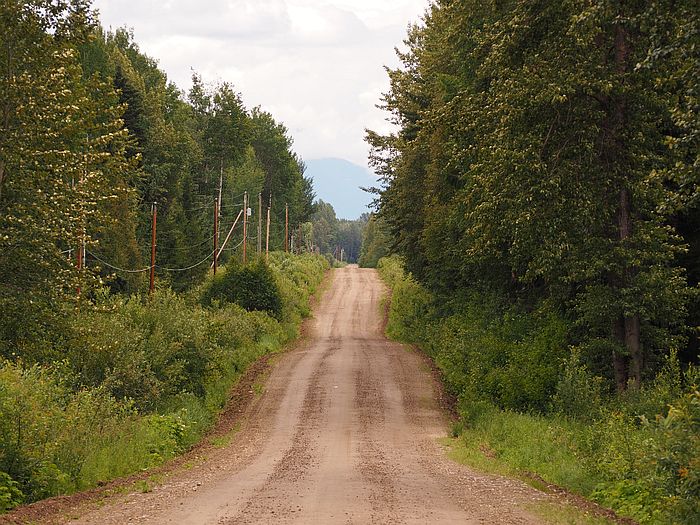

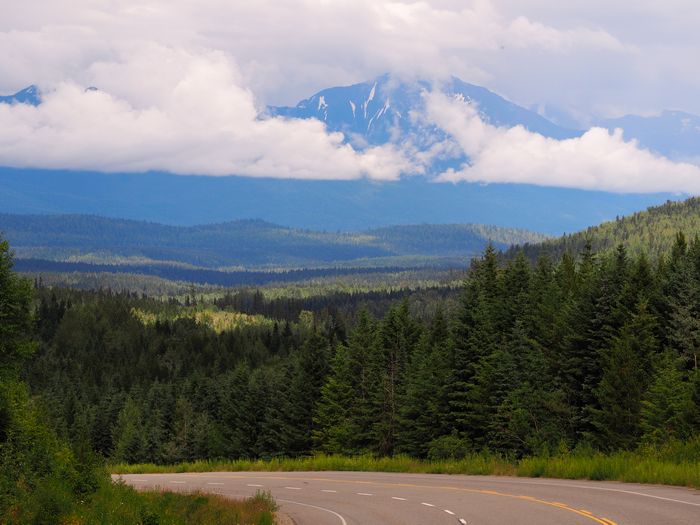
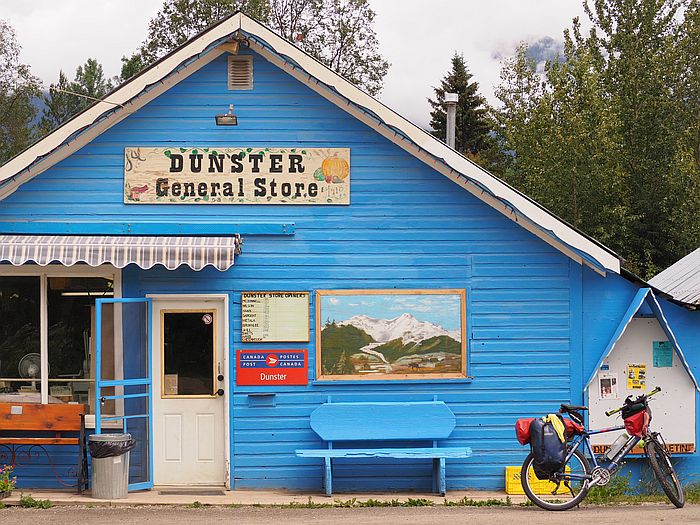
I also discovered more black bears that just stood next to the highway and were not interested in me at all.
Eventually, I finally arrived in Prince George and stayed overnight there with Nicole. Nicole had followed me on my website almost from the beginning; she read my blog and when she heard I was in the area, she immediately invited me to visit her and spoiled me continuously.
She confessed to me that, because of my trip, she had decided to make a superb lengthy cycling tour through Europe and now, she is glad to finally give something back to me that I had given her without my knowledge. We were friends from the very first moment on.
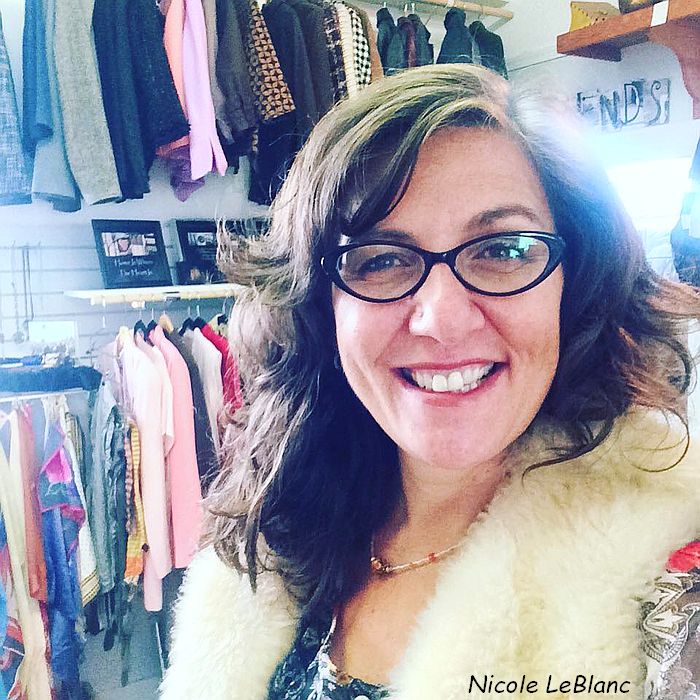
She even organized a room for me and visitors for my first slide show. I was extremely nervous about that, but in the end, everything really worked out well.
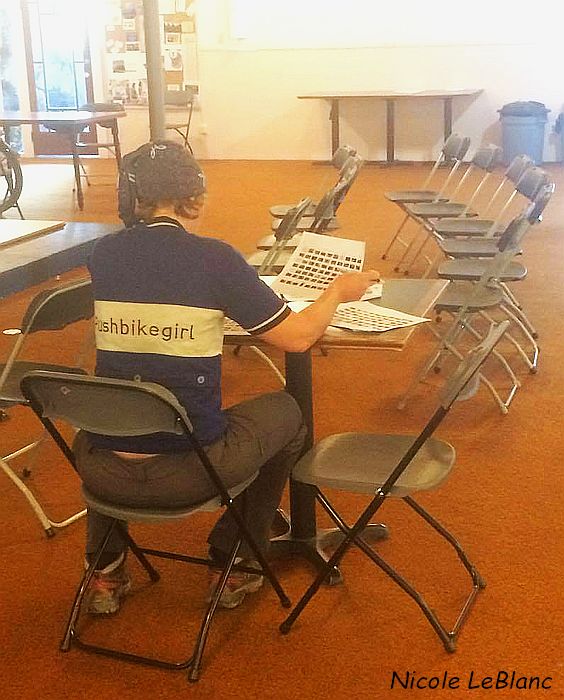
In Prince George, I also experienced shootings on two evenings in the neighborhood.
I stayed for two weeks with Nicole and was allowed to take care of her home for one of those weeks. Because of that, for the first time in a long time, I was able to have some time alone in a really nice place for myself. I was within four walls, where I could close the door behind me and do whatever I wanted and not have to be concerned where I would have to pitch my tent every night.
When I was on my way to the camera shop to buy myself a new camera so that I could finally be able to take pictures again, as if by magic, my camera suddenly began functioning again. After 4 weeks, it had been resurrected from the dead.
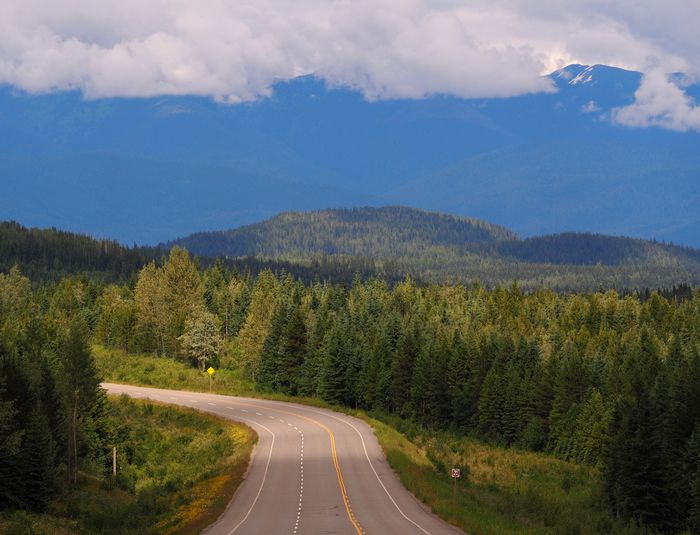
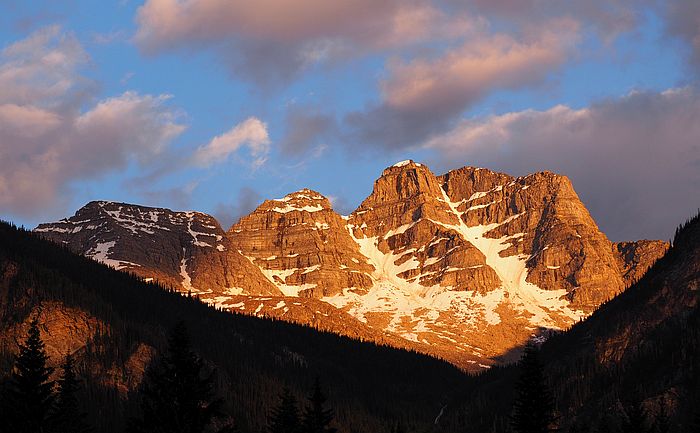
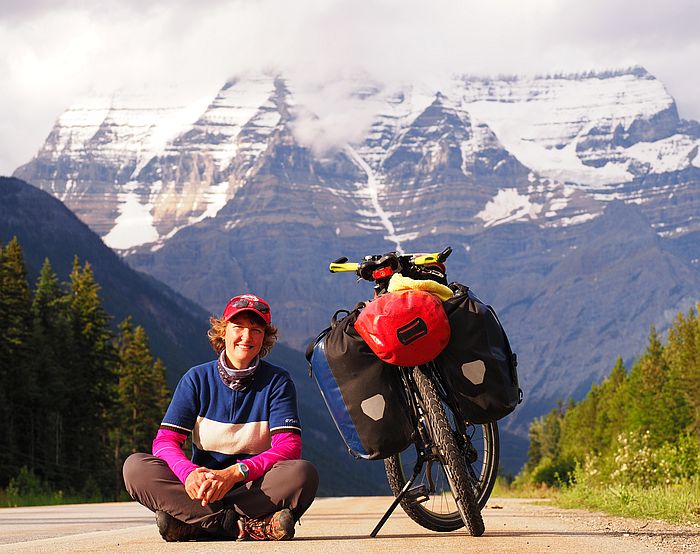
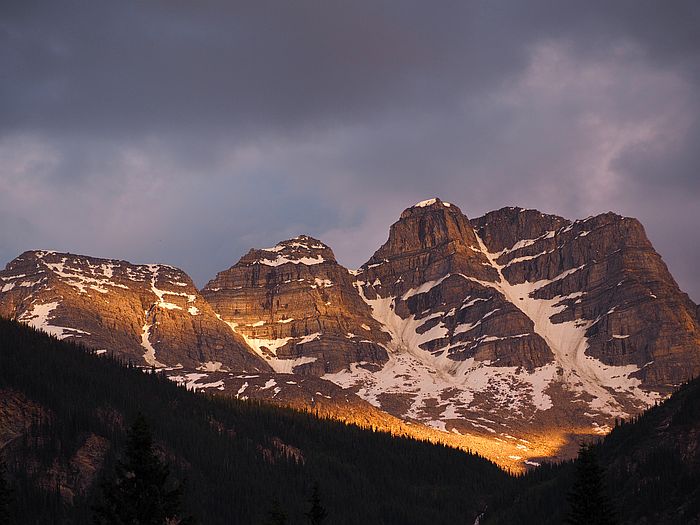
I managed to somehow make it to Jasper and saw more black bears, a lot of forest and, of course, cars. The last stretch was stunning scenery.
Jasper is a popular tourist destination. All hell has broken loose here in the summer and everything that has legs runs through Jasper. Not only there, because the Icefield Parkway goes to Banff from here, which is supposedly the most beautiful stretch of the country. Beautiful, clearly, but crazily full of traffic.
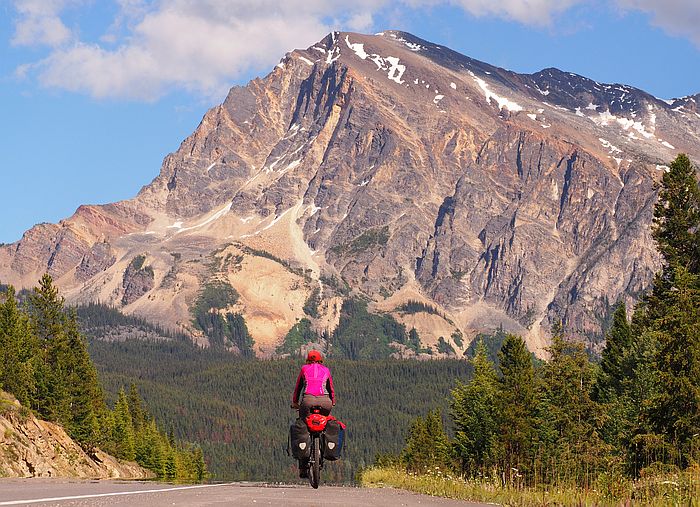
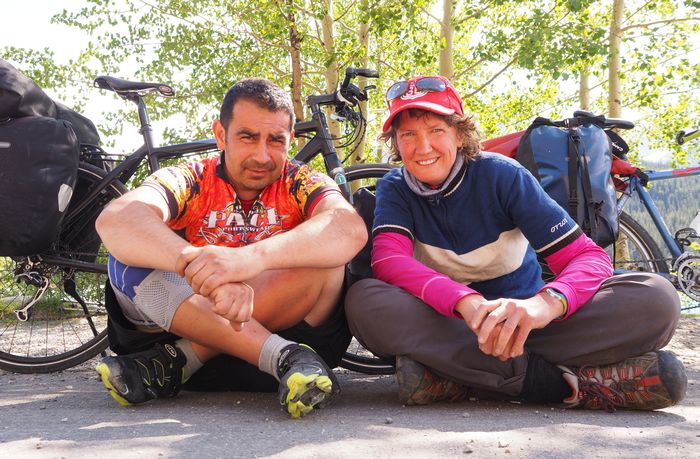
I hadn’t seen so many cyclists than when I was last in Germany and there were some very interesting cyclists among them. Additionally, I probably met more German tourists from Banff to Jasper than in the last three years of my journey altogether. I even found it really good and interesting to be able to spend some time with people from my own country again.
In Lake Louis, I stayed with Sebastian. Sebastian shares a tiny apartment with 3 colleagues. Two of them sleep in each room and they still have room for all the warmshower guests that Sebastian hosts in the summer. They were really great guys. They all work for a large hotel right on the lake. The cheapest night there costs $800; but if that’s too cheap for someone, they can also stay in another room for up to $2500.
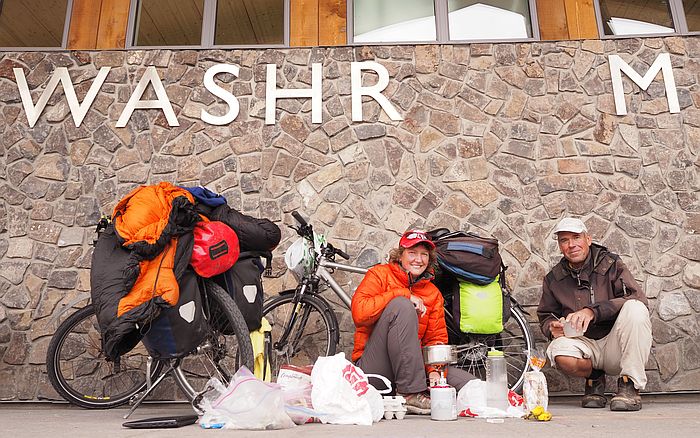
In Banff, I met Gunnar from Sweden. Gunnar has traveled through 150 countries and has cycled for many years all over the world and lives like a Spartan. He stirs his coffee cold and eats frozen vegetables from the pack without heating it up. We had a lot to talk about – this time, he was a real ally and a great encounter.
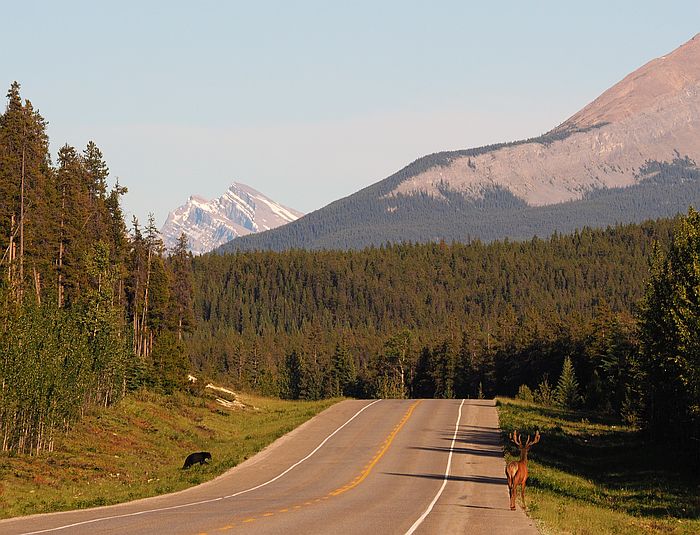
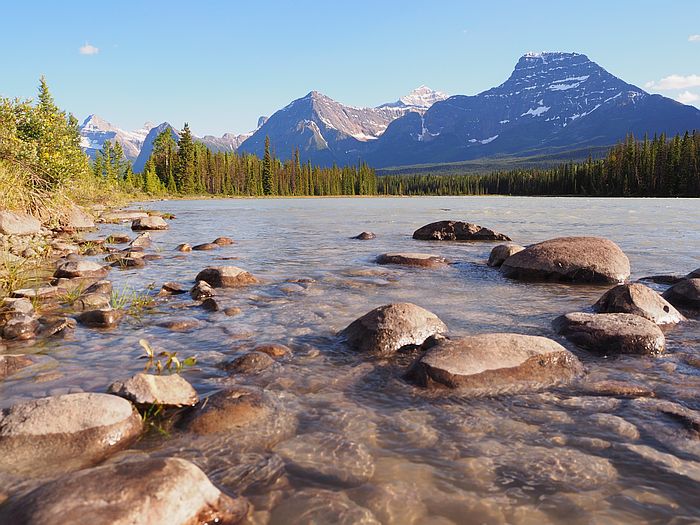
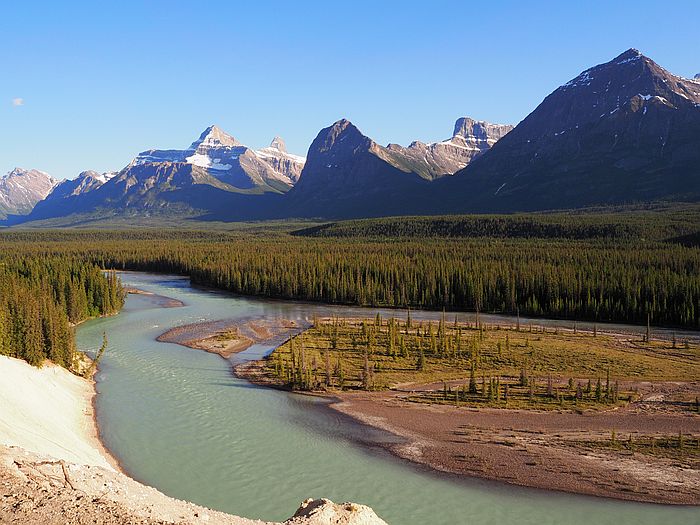
I could never get it out of my head. Canadians want to be different from Americans. Politics are different, of course. The USA is the most powerful nation in the world. But whoever has power must also have people who envy them and enemies as well. Whether Americans have brought that onto themselves or not, we’ll have to leave that as a question aside.
Canada, however, in comparison is insignificant, and that makes it a lot easier to be popular worldwide. For Canadians, it is apparently very important to keep a distance from its monstrous neighbor. It’s a bit like the short man syndrome, or perhaps the same as how some Austrians feel about the Germans.
As far as the Americans are concerned, I have the impression that Canada doesn’t really matter to them; whereas for the Canadians, it is the other way around. Although my observation is, of course, that there are a lot of things that unfortunately don’t matter to the Americans either. It seems that the only thing that matters to most of them lies between Los Angeles and New York, and after that, there is only water. The North is neutral, the South is the enemy.
Disregarding the social benefits and politics that Canadians enjoy, I often see the same lifestyle as in the USA – fishing, hunting, big cars, not very interesting towns, not the best food, expensive prices, pollution and of course my favorite topic, tons of plastic bags all over.
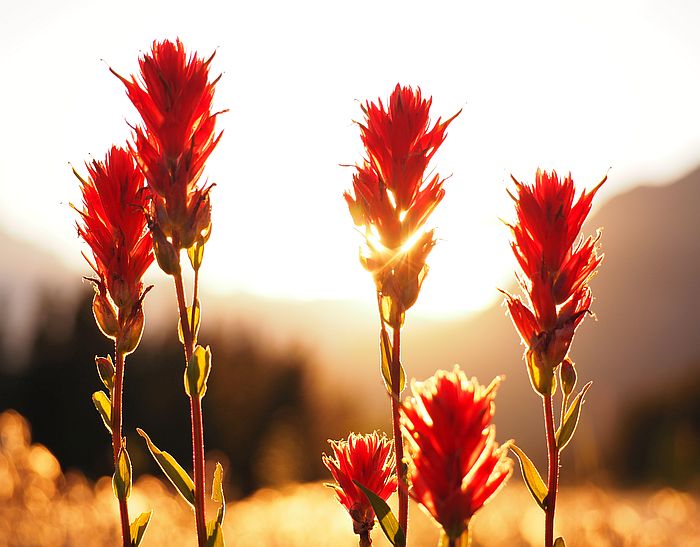
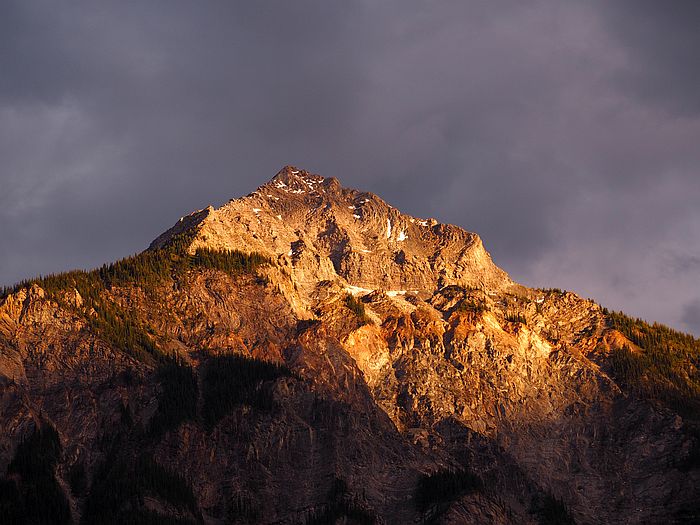
But Canadians are far more cosmopolitan, much more interested in the outside world, more enthusiastic about the outdoors and often much more relaxed than many of the conservative Americans; and that makes them really personable.
Even the private property hype is kept in bounds here. The service, however, is much better in the United States, even though it doesn’t always seem to be genuine and is even sometimes a bit too intrusive.
Canadians are also very patriotic and there are flags everywhere, although not on every doorstep as is the case in some areas of the U.S., but it is obvious that Canadians truly love their country.
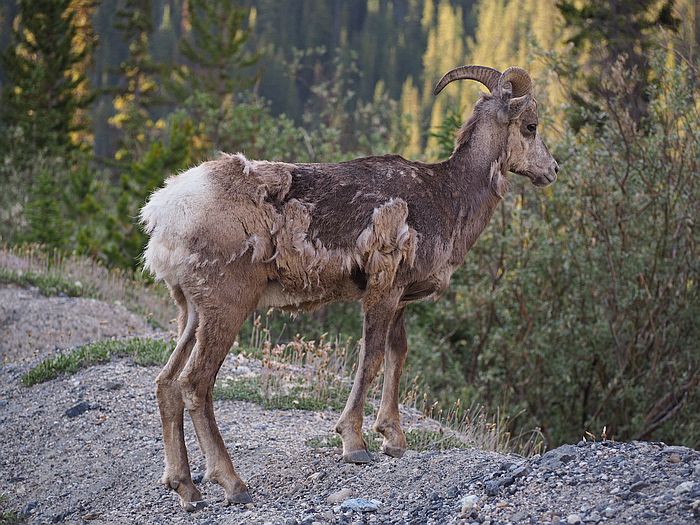
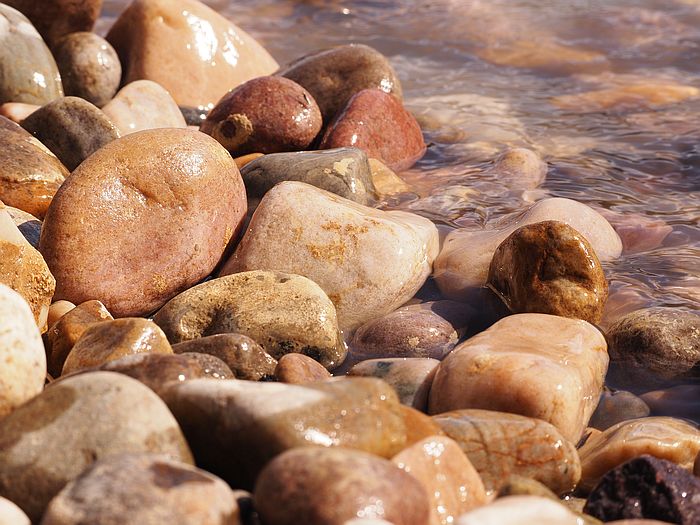
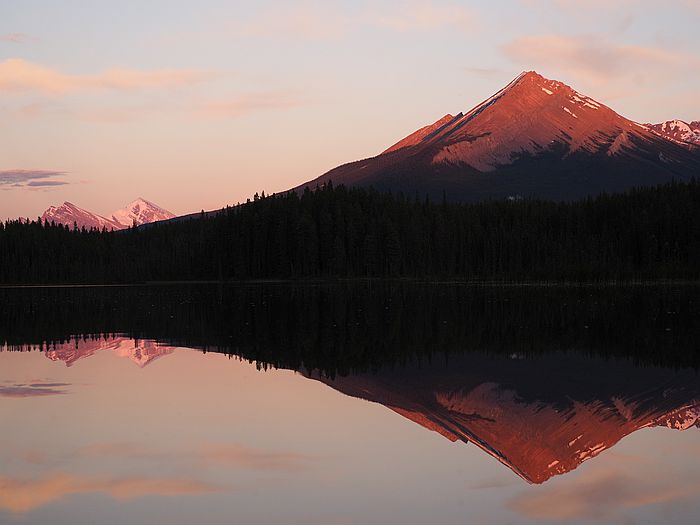
North Americans rarely seem to get cold. They wear shorts and T-shirts in almost all weather conditions – that is something they all have in common.
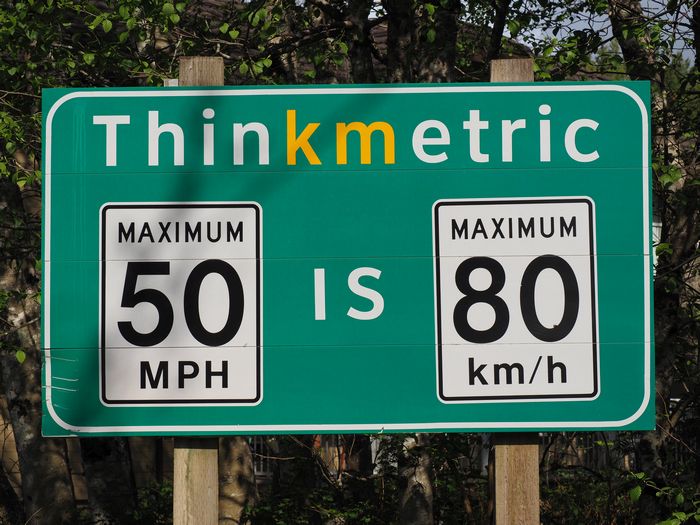
I have to conclude by saying that I was only in British Columbia and only very briefly in Alberta; so I can’t really say anything about the other areas in Canada, therefore, the term Canadians is wrongly chosen, because certainly the people in the East must think differently than the people in western Canada.The same is true for the U.S. And it is clear that the townspeople must also be different from the villagers. And since I travel primarily on country roads, I am bound to meet other people than I would find in the cities.
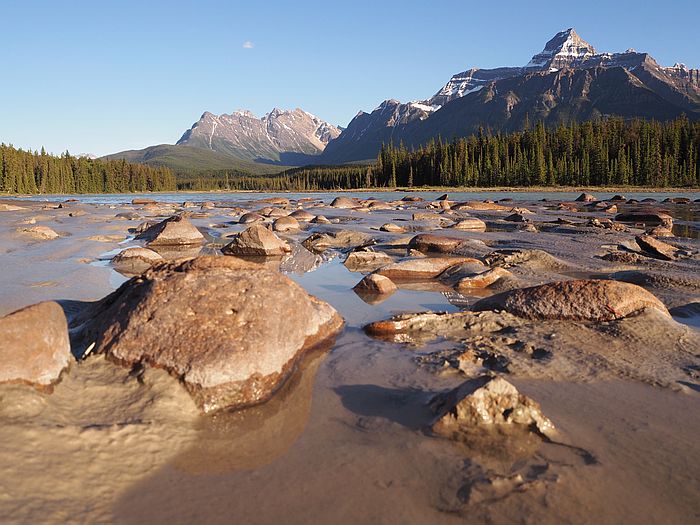
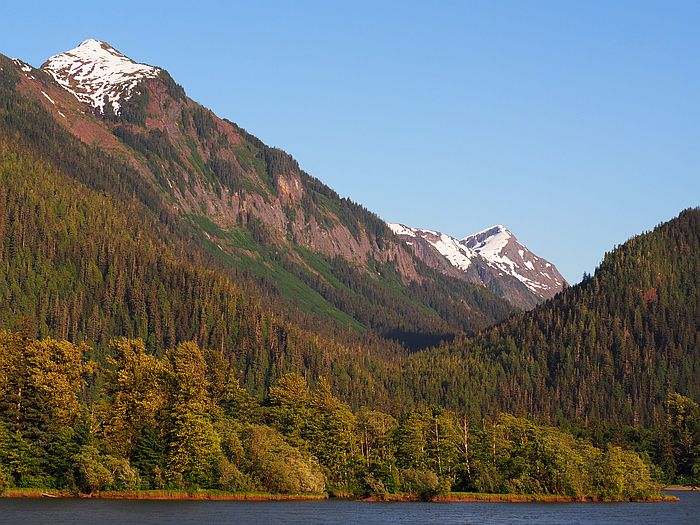
There is one thing that I cannot get accustomed to in North America. In Germany, and most of Europe, we always say to each other “Guten Appetit!” (enjoy your meal). It is truly amazing how deeply I am rooted in my own culture and therefore, I feel robbed of some of the coziness when I sit with a nice group of people at dinner and everyone simply starts eating whenever they please.
I have only experienced people saying a prayer before their meals in the US, but never in Canada.
At first, I found it a little strange when I was a guest in a house and then was offered nothing to drink or food for several hours. In the meantime, I have learned to ask right away if I could have some water or even go to the fridge myself. North Americans are more relaxed and tend to take more for granted than us Germans.
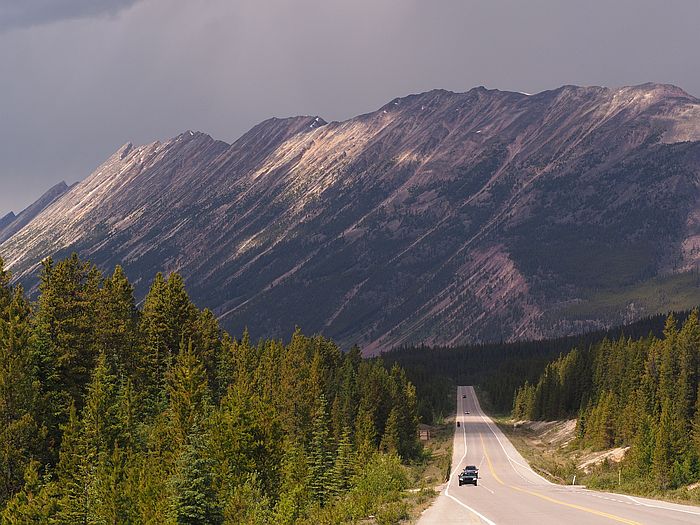
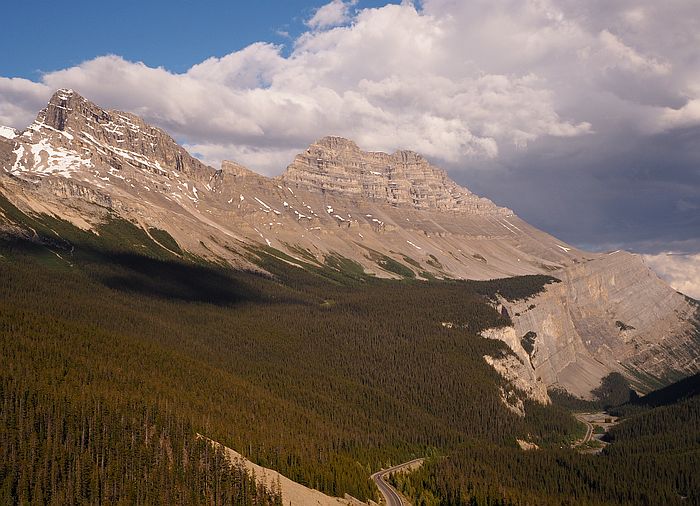
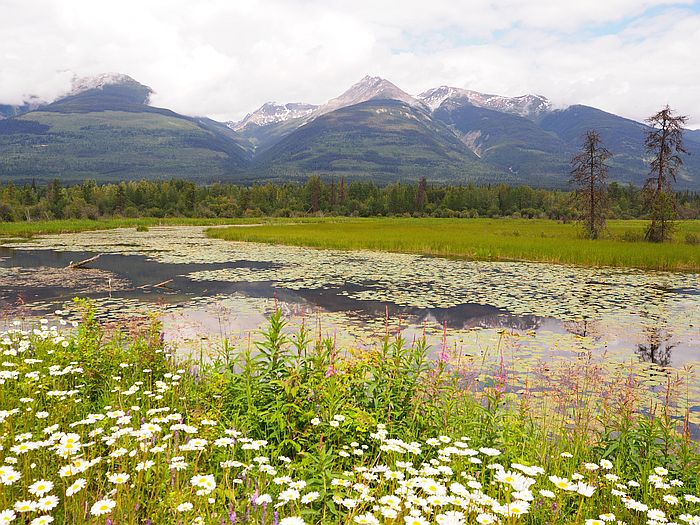
I also find it rather humorous that the bedding is completely impractical. All the blankets are stuffed under the mattress. I like to let my feet hang out from under the covers, but to do that, I have to pull all of the sheets and blankets out from under the mattress.
There is normally a thin sheet, a very light blanket and, finally, a comforter on top, all tucked under the mattress. Only the sheet is fresh; the rest is always used without a duvet cover which is used repeatedly. When two people share the bed, they use the blankets together.
North America is free of cracks between the bed halves, which is something I’ve never understood in Germany!
But now, finally, I’m ready for adventure again – EAT, SLEEP, RIDE – GREAT DIVIDE, here I come!
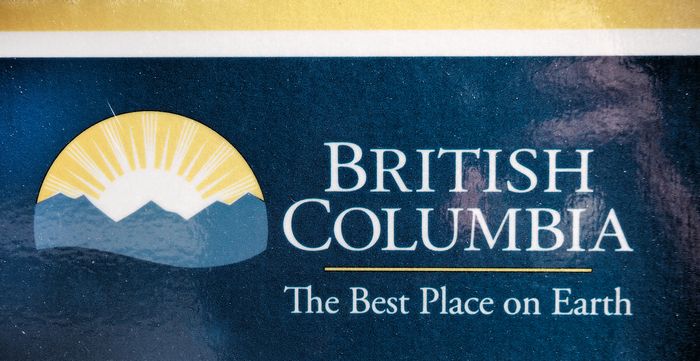
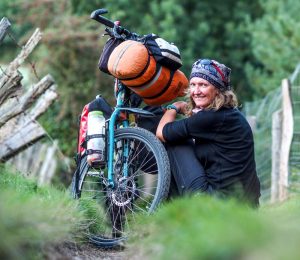

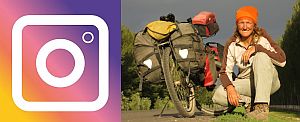
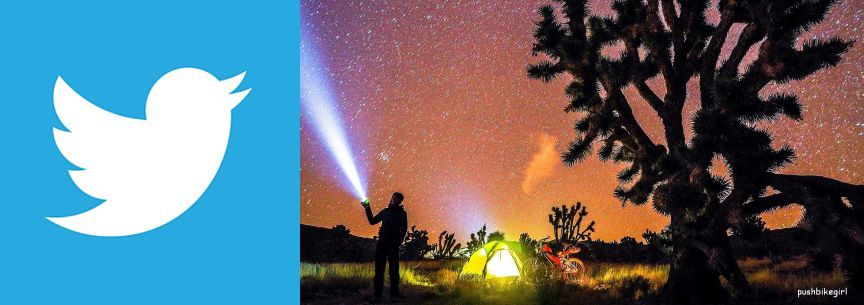

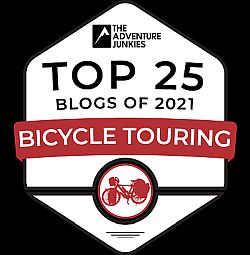
0 Comments